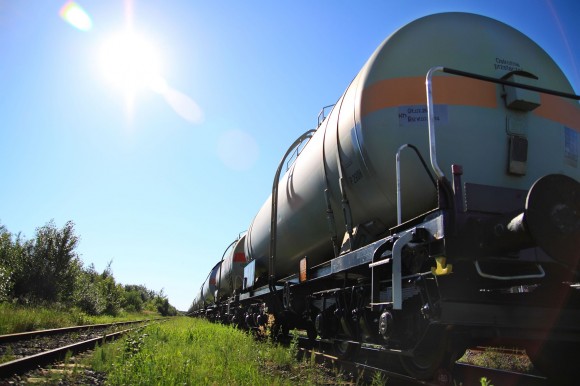Many oil-by-rail shipments will slow down through urban areas and track inspections will increase on high-traffic areas in response to a string of fiery derailments in the last several months, the American Association of Railroads (AAR) said.
The rail industry agreed to the voluntary measures in consultation with the U.S. Department of Transportation, which has been trying to prevent future mishaps.
Among the steps, large cargoes of oil will be fitted with new braking technology meant to prevent a pile-up on the tracks in case of a derailment. That measure will be in place by April and by July, many large shipments of crude oil will abide by a 40-mph speed limit in urban areas, the AAR said.
The safety of existing tank cars has come under particular scrutiny, and the association said that it would take more care with the DOT-111 model – the workhorse for oil-by-rail shipments. Trains will abide by the lower speed in urban areas if an older model DOT-111 is on the chain of tank cars in that shipment, the AAR said.
Also of particular concern is fuel produced out of new energy patches like North Dakota’s Bakken region. Bakken oil shipments could be more flammable and prone to explosion than crude oil from other regions, officials have said, and regulators are trying to better understand the risk of carrying that fuel on the tracks.
The American Petroleum Institute also said that it will work to improve testing and classification of oil-by-rail shipments.
“Safety is a shared responsibility among all energy-supply-chain stakeholders,” AAR President and CEO Edward Hamberger said in a statement.
In a letter to the AAR, Transportation Secretary Anthony Foxx said “the rapid increase in the production and transportation of crude oil requires additional vigilance.”
Was this article valuable?
Here are more articles you may enjoy.



 Farmers Adjusters Cry Foul Over Workloads, Claims Handling in Letter to Regulators
Farmers Adjusters Cry Foul Over Workloads, Claims Handling in Letter to Regulators  Home Insurance at $10,000 a Year Shows California Buyers’ Pain
Home Insurance at $10,000 a Year Shows California Buyers’ Pain  ‘Great Resignation’ Enters Third Year as Workers Embrace AI, Upskilling, PwC Says
‘Great Resignation’ Enters Third Year as Workers Embrace AI, Upskilling, PwC Says  German Insurtech Wefox to Replace CEO After Board Rejects Mubadala Sales Plan
German Insurtech Wefox to Replace CEO After Board Rejects Mubadala Sales Plan 


